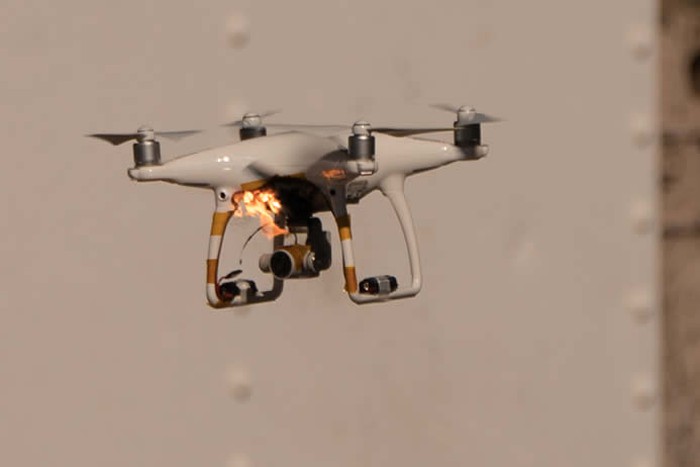By THERESA HITCHENS
 ARLINGTON, VA: DoD will finish down-selecting “best of breed” systems to counter small drones in April, as a first step in a longer-range plan to streamline the myriad programs across the services, according to Army Maj. Gen. Sean Gainey, deputy director for force protection on the Joint Staff
ARLINGTON, VA: DoD will finish down-selecting “best of breed” systems to counter small drones in April, as a first step in a longer-range plan to streamline the myriad programs across the services, according to Army Maj. Gen. Sean Gainey, deputy director for force protection on the Joint Staff
The goal, he told the Association of the US Army (AUSA) here today, is to “eliminate redundancy and excess across the joint forces.”
Gainey heads the new Joint Counter Small Unmanned Aerial Systems (C-sUAS) Office that the Army stood up to manage its 2019 mandate from Secretary of Defense Mark Esper to serve as DoD’s C-sUAS Executive Agent (EA). The EA is charged with finding joint solutions to the threat caused by small drones, and to ensure that the services are not duplicating each other’s efforts. Esper approved the EA implementation plan on Jan. 6.
Gainey showed a chart that laid out the C-sUAS EA’s deliverables for its first year: a DoD Directive; a Joint C-sUAS threat assessment; a DoD counter-drone strategy; down-select of Joint Urgent Operational Need (JUON) counter-drone systems; and a Joint Capability Development Document including delivering capabilities to the warfighter.
Afterward, Gainey told me that his office is in the midst of reviewing the some 40 currently deployed systems across all the services to narrow down to those that work the best for each part of the counter-drone mission.
“We’re looking across the spectrum at the detect, track, ID, and defeat systems,” he said. Those chosen will be grouped into types, Gainey explained, because DoD has different needs. “We need some for fixed sites, we need some for CONUS, we need some that are mobile.”
Perhaps most importantly, he said, there is a need for a common command and control system to tie the various systems together and provide a common air picture.
Some of the systems being eyeballed, Gainey said, include:
the Marine Corps’ Marine Defense Air Integrated System (MADIS), built by Ascent Vision, a variant of which took down an Iranian drone in the Straits of Hormuz in July 2019;
the Army’s Raytheon-built KRFS radar;
the Air Force’s Medusa system of systems that in part relies on SRC’s Silent Archer, and
the Army/Missile Defense Agency Theater High Altitude Air Defense (THAAD, built by Lockheed Martin) C2 system.
He didn’t specify, however, what happens to the systems that don’t make the cut — though one would naturally assume those would be phased out over time.
The next step, Gainey explained, will be to match the best of the current capabilities for finding, tracking and killing small drones with the joint requirements now being fleshed out, and then take a look at how ongoing prototype programs might fill those needs.
“You can’t hide very well” in space, one industry official said, “So, I think the government is going to have to get over that, and recognize space is a free place.”
Gainey told the AUSA meeting that his office would be working with the Army’s Rapid Capabilities & Critical Technologies Office (RCCTO), led by Lt. Gen. Neil Thurgood, to rapidly develop prototypes for fielding. According to his presentation, Central Command has the priority for first fielding.
One of the ways DoD susses out new counter-UAS technologies is via the classified Black Dart exercise, that according to the Defense Innovation Unit (DIU) is a “joint, interagency demonstration focusing on rapid development and implementation of C-UAS technology from readily-available commercial and government vendors.”
According to a 2019 study by the Institute for Defense and Government Advancement (IDGA), DoD spent about $900 million on counter-drone efforts across the services. A Feb. 12 report by the Congressional Research Service said that in 2020, DoD plans to spend at least $373 million on counter-UAS (C-UAS) research and development and at least $200 million on C-UAS procurement.
No comments:
Post a Comment